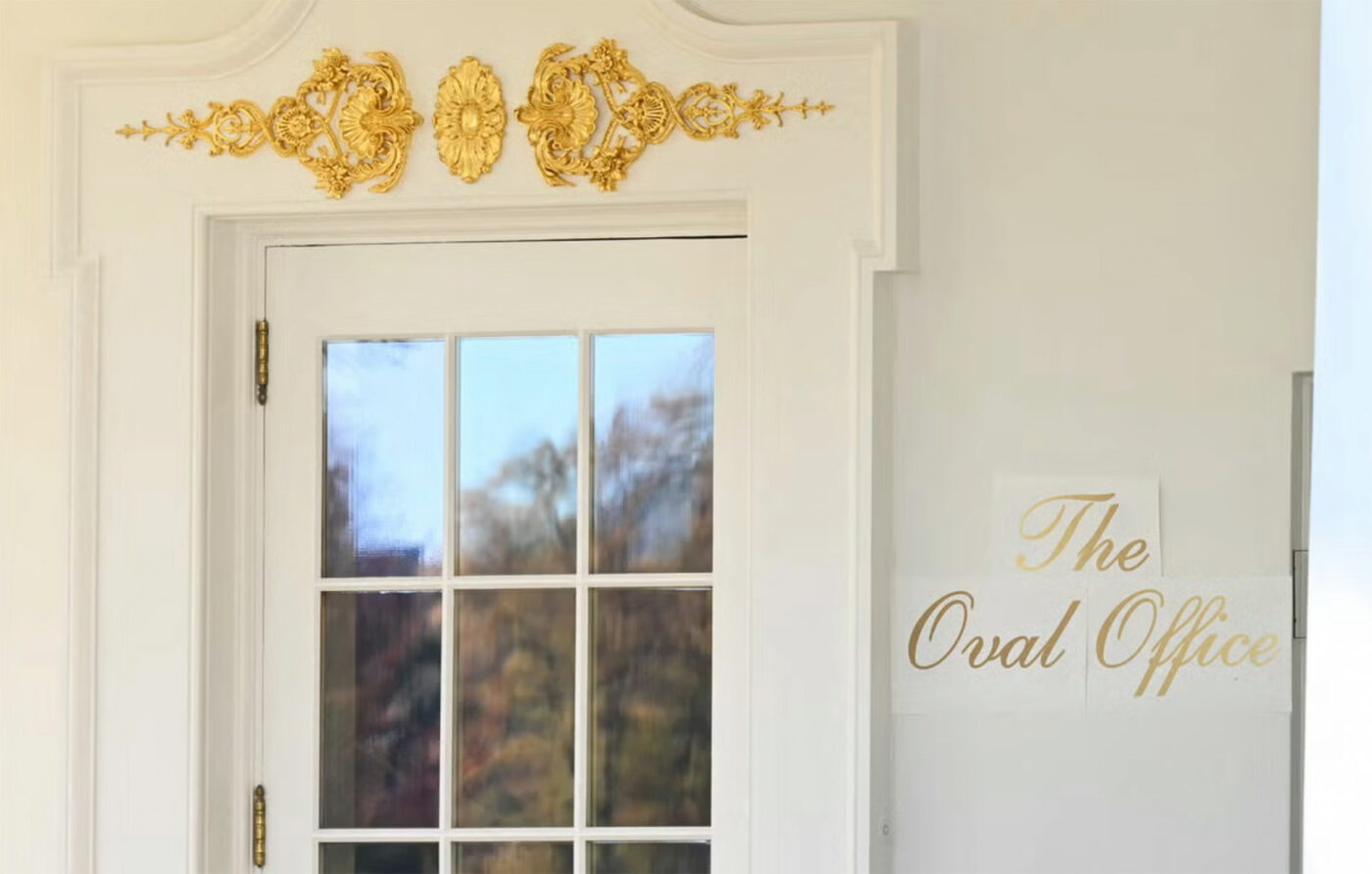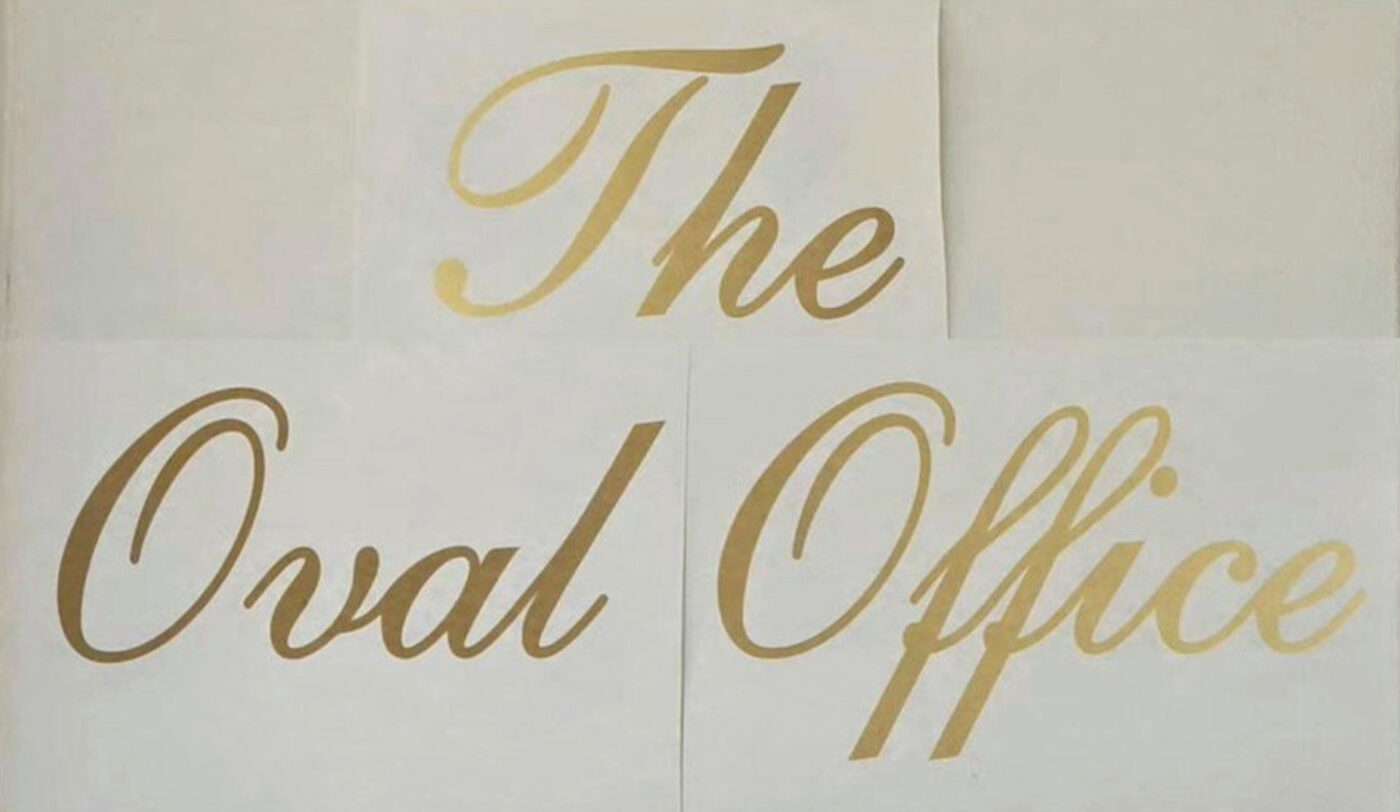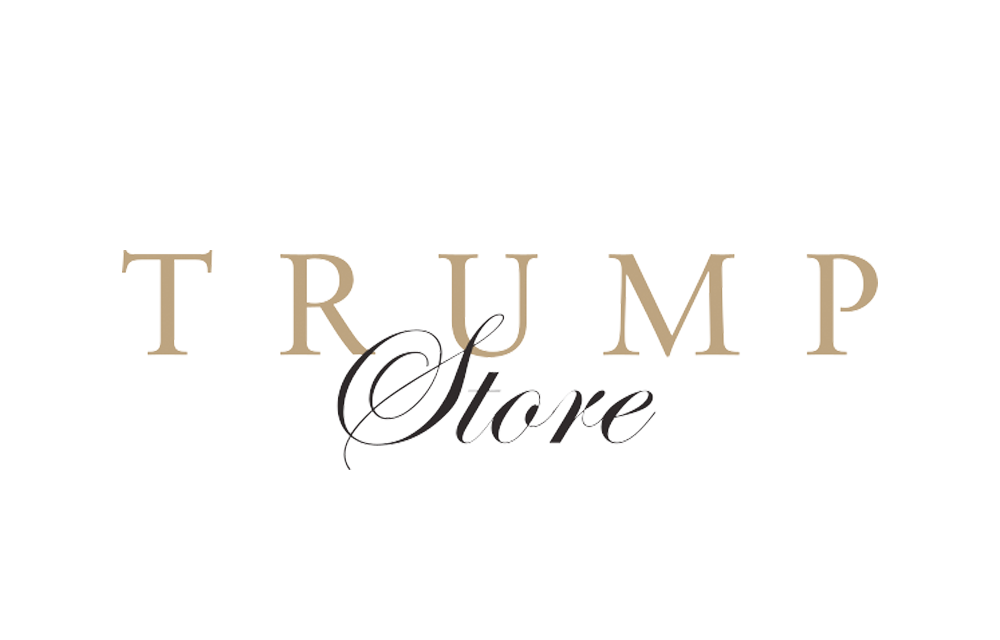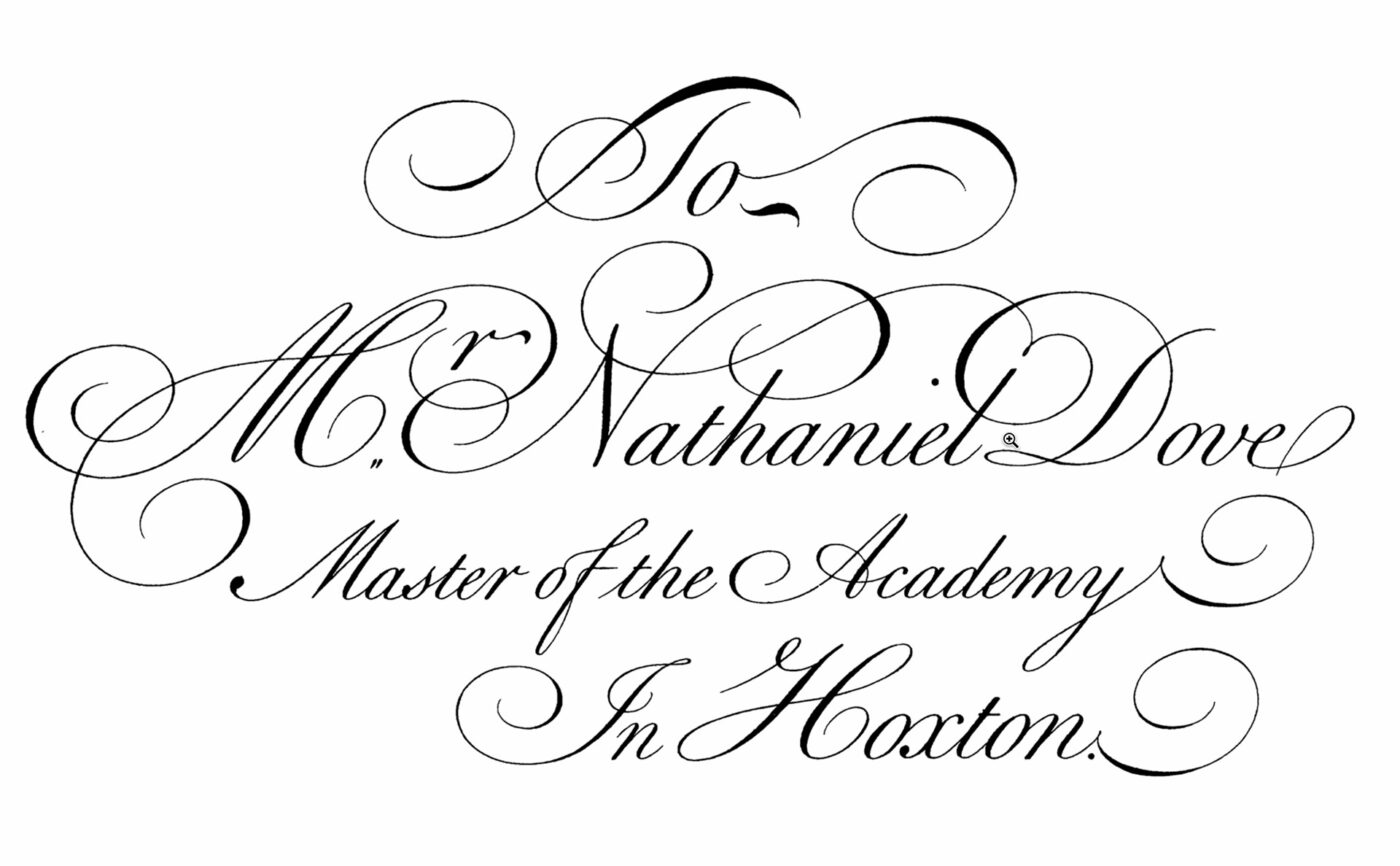Trump’s latest White House “upgrade” includes a paper Oval Office sign. In this article and spontaneous video I’ll talk about the font choice, why it feels insecure rather than elegant, and what it says about the use of script fonts that want to pretend to be luxury.
Some background: If you caught last week’s photos from the White House Rose Garden, you might have spotted a curious little detail – a temporary paper sign outside the Oval Office, set in shiny gilded script. HuffPost asked me for thoughts on it. So here’s my analysis on why this sign feels so strange, and what it teaches us about design choices that over-promise and under-deliver.

A sign that wants to look fancy
The sign uses a gilded script font on a plain paper, a placeholder obviously, for something more permanent. And to me, this is the cheapest way to signal something is noble. It’s lush and golden, but it feels insecure, like trying a bit too hard. Think of a cheap chocolate brand using a shiny font to look luxurious or a low-budget hotel conference room that is going for grandeur but lands on kitsch.

It is also reminiscent of the Mar-a-Lago font, while it is not that exact one. But it’s a style that often appears in Trump-branded stuff. So this could be an effort to make the White House more Trump, or it is just the “luxurious” aesthetics that Trump finds appealing.


A proper typeface used in poor way
Let’s dig into the typography itself. The font appears to be something along the lines of English 111 Adagio or Shelley Script. Both solid, respected script typefaces with roots in English roundhand calligraphy.

But here’s where things get messy:
- There might have been an outline added to the font so that it works as a sign. But this way it looses the strong contrast of thin and thick strokes and therefore its elegance.
- The letters don’t connect properly in a way calligraphic script should. Look at the capitals that stand there alone next to short entry strokes of the lowercase.

You might wonder why the original script font also does not show connections to the capitals. This is due to the technical limitations when English 111 font was made, so that it is not offering contextual alternates for these cases.
Script fonts are inappropriate for signs
Besides the poor execution, there is another, bigger issue: script fonts are often inappropriate for a sign, and especially for cut-out letters. They’re narrow, decorative, and sensitive to bad spacing or low-quality rendering. They are also harder to read. And that all besides the fact that you really do not need a sign in front of the Oval Office.

Overall, the sign’s design shows the intent to look refined, yet it ends up feeling hollow and predictable. It signals aspiration rather than authenticity. Typography doesn’t just communicate words. It communicates confidence, tone, and intent. And when the styling feels insecure, the whole message wobbles. But maybe that fits this presidency.
What you can learn from this
Even if you’re not designing signage for world leaders 😉, there are two takeaways:
- Let materials match the message: If you want something to feel premium, the typography, material, and execution all need to work together. A fancy font needs to fit the environment.
- Choose script fonts with care: Use them sparingly and intentionally. Test how letters connect. Check whether the elegance holds up at the size and medium you’re working with.
Here you can find a few script fonts I recommend in my Font Friday reviews.
What do you think of the sign? Share it in the comments! Also if you’ve got other examples of script fonts gone wild.

always appropiate, and inspiring!
D.
So true.
Thank you for your precise, critical and entertaining investigation!
True and sad 😂.